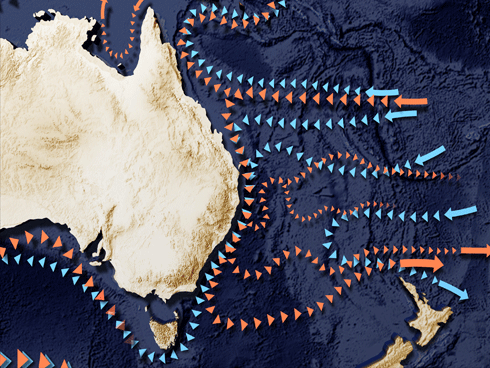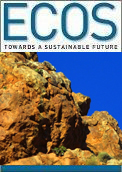
|
Published: 13 February 2012
Global hotspot in the Tasman Sea
Oceanographers have identified a series of global greenhouse warming ‘hotspots’ created by wind systems and oceanic currents that have been strengthening and accelerating over the past century.

|
|
Ocean currents in the Tasman Sea
Credit: CSIRO, Wealth from Oceans Flagship and Australian Climate Change Science Program
|
The hotspots are formed alongside ocean currents that wash the east coast of the major continents – Africa, Japan, the United States, South America and Australia. The warming in these sites proceeds at a rate far exceeding the average surface ocean warming rate.
The research was published in January 2012 in the journal Nature Climate Change .
Co-author Wenju Cai, said that the major influence of these hotspots is in limiting the ocean’s ability to take up heat and carbon from the atmosphere.
In Australia’s case, scientists report intensifying east-west winds at high latitudes pushing southward and speeding up the swirl of currents circulating in the South Pacific, extending from South America to the Australian coast.
The resulting changes in ocean circulation patterns have pushed the East Australian Current around 350 kilometres further south, with temperatures east of Tasmania as much as two degrees warmer than they were 60 years ago.
‘We would expect natural change in the oceans over decades or centuries but change with such elevated sea surface temperatures in a growing number of locations and in a synchronised manner was definitely not expected,’ says Wenju.
This research drew on ocean monitoring data from one of only three stations that remain as continuous sources of oceanographic data. This highly prized data has been collected once a month, every year since 1945, by CSIRO scientists and technicians who venture by small boat to a point north of Maria Island on Tasmania’s east coast to measure the ocean’s vital statistics.
By today’s standards the monthly monitoring is basic – it uses bottles, brass weights and a reversing thermometer – but not inaccurate, and collectively these measurements relate a story from a comparatively long record of change.
Source: CSIRO



